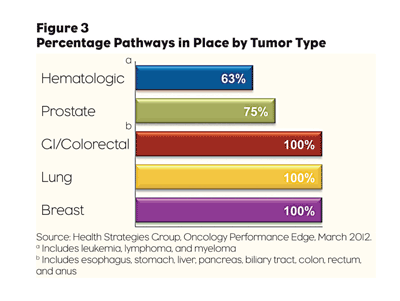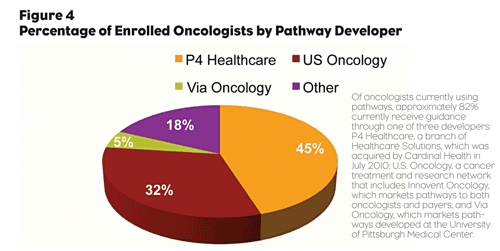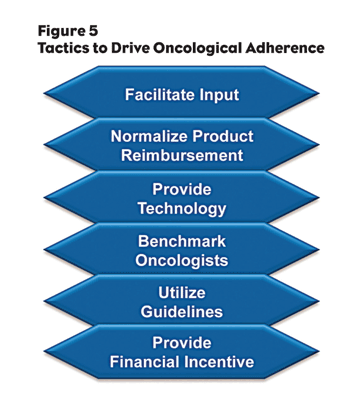A Growing Force in Shaping Oncologists’ Prescribing Decisions
In today’s oncology market, a new force is emerging that promises to have increasing impact in the future: the pathway developer. In fact, treatment pathways are already having an impact on oncologists’ prescribing habits.
For years, oncologists have relied on commonly referenced and respected guidelines, such as those developed by the National Comprehensive Cancer Network (NCCN), when treating patients with various cancers. These guidelines typically recommend multiple treatment options dependent on diagnosis.
TREATMENT PATHWAYS
In contrast, treatment pathways are detailed, evidence-based processes for delivering care to specific patients; pathways may specify a single best treatment or limited options. Granularity in treatment options and recommendations varies by pathway developer. As pathways evolve, however, options will become narrower and more specific, lessening variation and increasing the ability to predict costs and improve outcomes of oncology care (Figure 1).
There are many versions of treatment pathways currently used by oncologists within individual practices, or within the institutions they are affiliated with. Recent research1 identified and focused on 8 broader-reach, established pathway developers that currently manage 19 pilot programs across the United States.
The oncology sales and marketing environment is changing.
Competition is tougher, more products are available, and reimbursement is evolving. The research identified these and other market conditions that are driving the trend for oncologists to deliver more efficient health care through treatment pathways (Figure 2).
PATHWAYS TARGET COMMON, COSTLY CANCERS
Most pathway developers have prioritized and established pathways for breast, lung, GI/colorectal, prostate, and hematological cancers (Figure 3). Compared to other cancer types, these have higher prevalence and costs as well as multiple treatment options.
Pathway developers will offer more disease-specific pathways in the next three years to lessen treatment variation and reduce costs across broader patient types. They will likely stop at rare diseases because limited data are available on which to base pathway decisions.
RECOMMENDATIONS FOR ONCOLOGY COMPANIES
Motivated by the rising costs of oncology products, pathway developers aim to prioritize effective treatments while reducing use of more expensive options. Committees will determine treatments to include based on unbiased, evidence-based data. To successfully engage with developers and position products within pathways, oncology companies may focus on the following:
- Providing clinical and economic evidence supporting the use of their products
- Incorporating needs for evidence-based medicine into their research
- Sharing data with pathway developers and key opinion leaders during product and launch phases (Figure 4)
Over the next three years, we predict a significant increase in the number of oncologists using pathways to treat patients through development of additional local or regional pathways, and growth of current leading developers as they demonstrate benefits to both oncologists and health plans (Figure 5).
We also predict the pathway developers’ partnerships will increase with health plans. Already, a number of plans, including Aetna, WellPoint, and several Blues plans, are piloting pathways with leading developers.
In the near term, adherence to pathways will drive product use and selection. To drive oncologist adherence to pathways, developers implement a number of tactics. Still, several barriers could slow physician adoption of pathways, including their desire for prescribing autonomy as well as the challenges of integrating IT systems.
REFERENCE
1. Health Strategies Group, 2012. Oncology Pathway Development and Evolution.




Of oncologists currently using pathways, approximately 82% currently receive guidance through one of three developers: P4 Healthcare, a branch of Healthcare Solutions, which was acquired by Cardinal Health in July 2010; U.S. Oncology, a cancer treatment and research network that includes Innovent Oncology, which markets pathways to both oncologists and payers; and Via Oncology, which markets pathways developed at the University of Pittsburgh Medical Center.

Download at www.pm360online.com/tools




